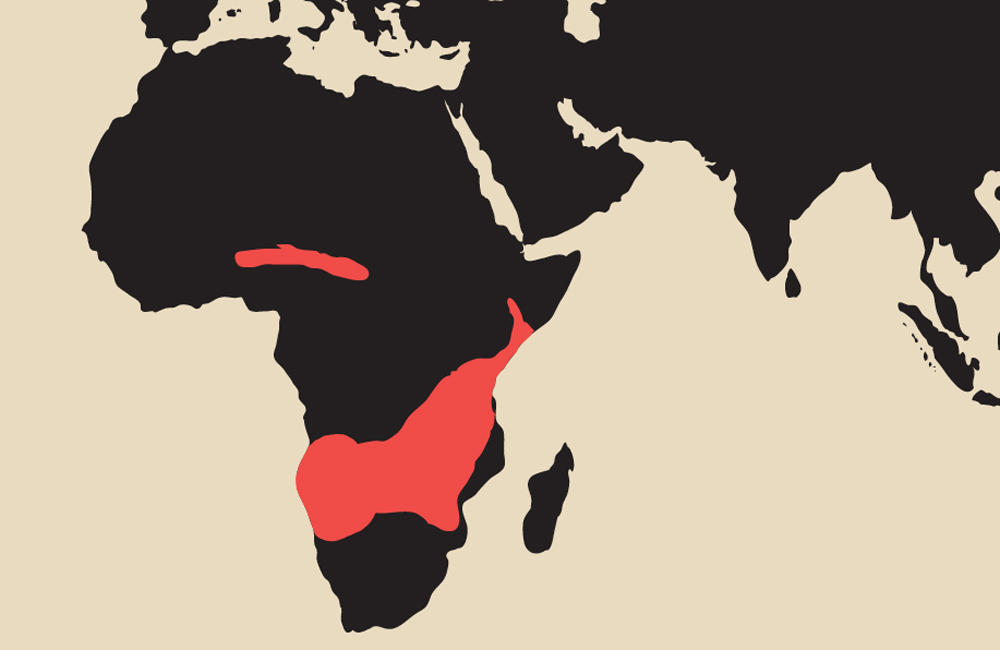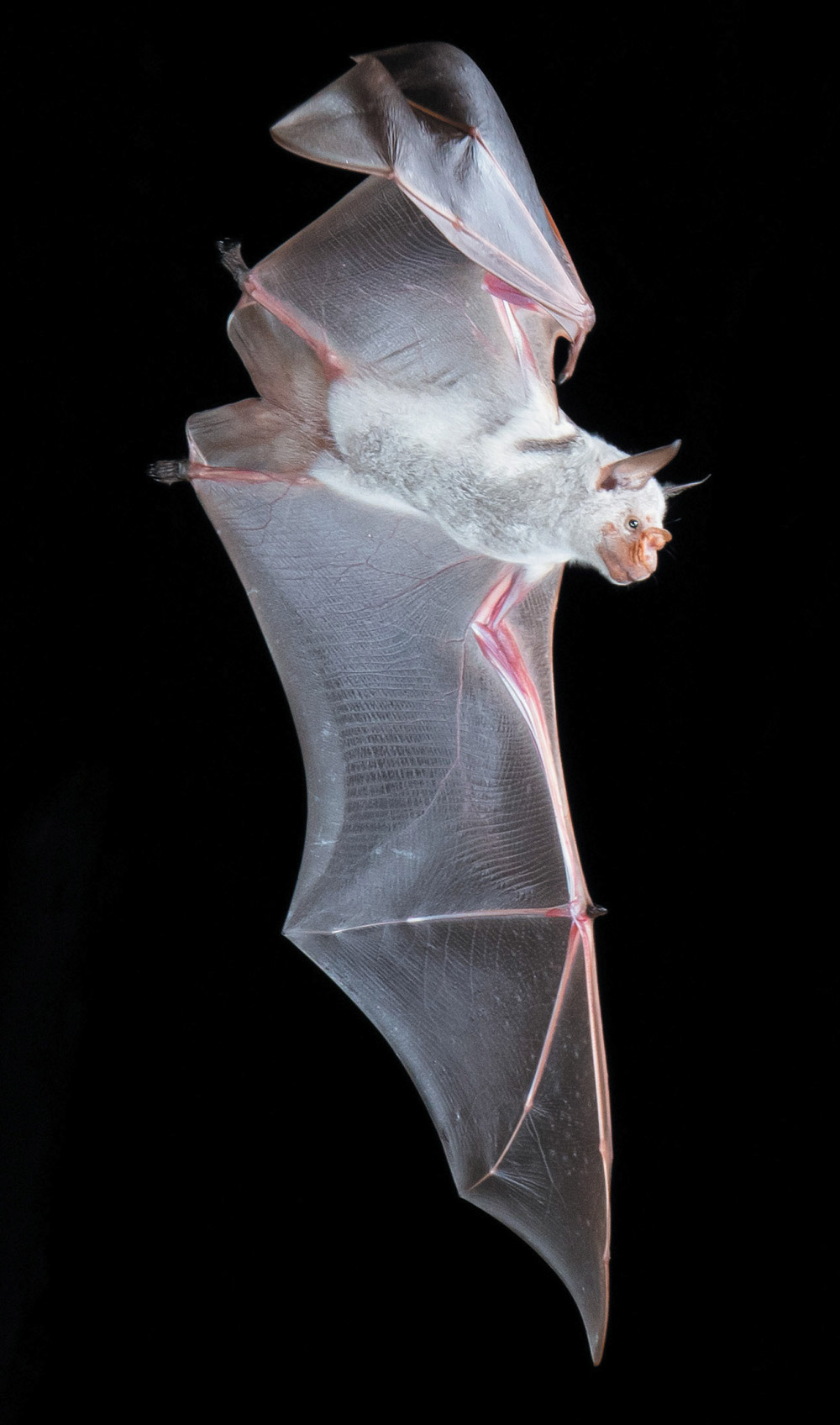
Striped Leaf-Nosed Bat
Binomial
Family
Colony size
Weight
(180 grams)
Diet
Status

ew people have heard of the striped leaf-nosed bat (Macronycteris vittata). This large African bat is found in various populations across the continent, notably in larger colonies in Eastern and Southern Africa and smaller colonies in Western and Central Africa. While the striped leaf-nosed bat is an interesting species for many reasons, it needs to be better studied. Bat Conservation International (BCI) and partners are setting out to change that.
“Species-specific research on African bat species is so incredibly rare,” says Natalie Weber, a conservation scientist who works with BCI as Strategic Advisor for Endangered Species in Africa. “Unfortunately, the only efforts targeting this species were based on trying to find some viruses. But that’s not research on the species.”
Weber has been fortunate to see the striped leaf-nosed bat during her fieldwork in West Africa and Mozambique. She finds the bat fascinating, partly due to its large size and partly due to its intelligence. She recalls observing four or five individuals in a cave in Mozambique who stood out from the other bats roosting there.
“You could see they were kind of observing us as if they were thinking, ‘What are these dudes doing here? Should we be scared?’ They’re super curious,” Weber says. “I think the species should receive more attention because it has the potential to be an emblematic species by its appearance and size. But unfortunately, there’s nothing at the moment.”
What we know about the striped leaf-nosed bat
She does note that an interesting aspect of the striped leaf-nosed bat is that it’s visually indistinguishable from the giant roundleaf bat (Macronycteris gigas). “They look the same, but they are distinguishable by the echolocation frequency,” Weber says. And, of course, genetic analysis can also distinguish between the two species.

How conservation work protects the striped leaf-nosed bat
“Our focus in Kenya is to find community-based solutions for a beneficial coexistence between bats and humans along the coast,” says Isabella Mandl, Ph.D., BCI’s Regional Director of Africa and South Asia. “At all sites, one in the south and two in the north, we are protecting important cave roosts by helping the communities set up community-based organizations and formal protection. We are also working together to formulate management plans for the areas, including habitat restoration and ways for the communities to generate income from green enterprises.”
Weber calls such projects an “umbrella protection” that positively affects all resident bats, whether or not they’re Endangered. And she hopes that when more attention is drawn to these caves, perhaps more interest will develop in the striped leaf-nosed bat.